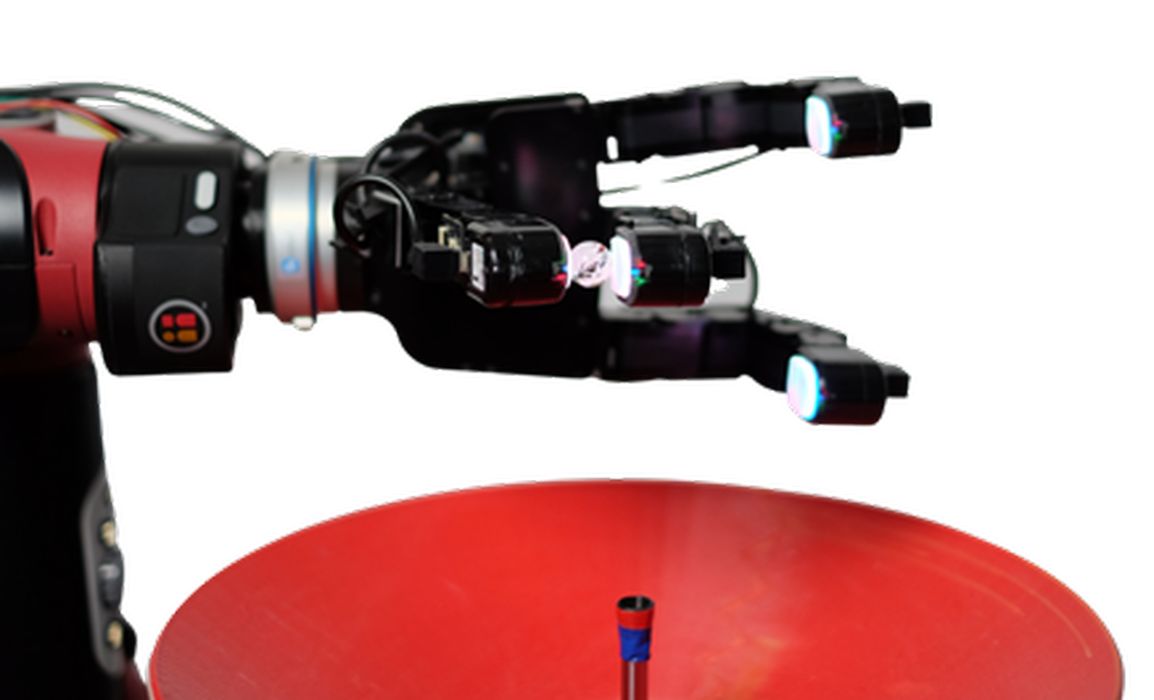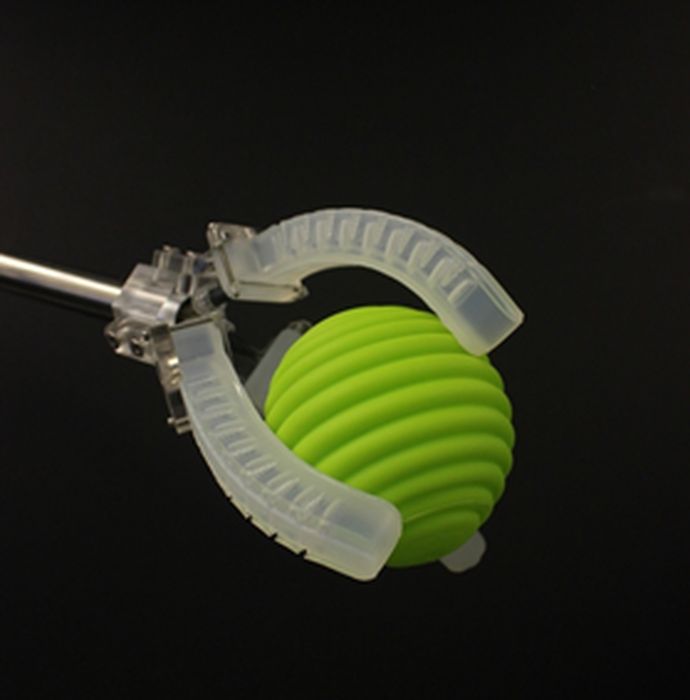
Charles R. Goulding and Andressa Bonafe explore examples of 3D printing techniques used to improve robotic systems.
The sense of touch could be the next frontier in robotics technology. It could open the way for a myriad of new applications that rely on the complex ability to react appropriately to unpredictable environments. Creating a more fine-tuned interface between robotics systems and the world around them could allow these systems to handle delicate objects, enhance safety in human interactions, and considerably improve performance in advanced applications, such as artificial limbs.
As highlighted in a recent Wall Street Journal article, however, touch is a highly complex skill involving many receptors and a variety of inputs such as temperature, force, texture, weight, and shape. 3D printing can be a powerful tool in bringing this challenging technology to life.
For now most attempts to give robots a sense of “touch” rely on cameras. Visual interpretation allows robotic systems to pick up information on texture, shape, and hardness. Based in Waltham, Massachusetts, GelSight is a pioneer in tactile sensing elastomer technology, which enables robots to perform tasks requiring a human-like sense of touch.
Co-founded by MIT research scientists, the startup has created a groundbreaking solution that uses a soft rubbery material placed on top of a light and a camera. Whenever in contact with an object, this pliable material changes shape. The deformation is then captured with extreme precision by the camera, which can measure shifts as small as one micrometer.
GelSight has taken advantage of a streamlined, easy-to-manufacture design while leveraging the power of 3D printing to give users flexibility in applications. Among its line of products, the GelSight Mini stands out as an affordable and compact gel-based tactile sensor that scans ultra-fine 2D and 3D imagery of various material surfaces.
With a plug-and-play approach via a browser-based camera interface, it is easy to use. Combined with custom 3D printed mounts, it opens the way to professional, academic, or hobby-level interest in the field of touch-based interfaces, robotics, and industrial scanning.

Despite considerable advancements in vision-based touch systems, limitations should not be overlooked. Slow frame rates, restricted lens coverage, and light refraction are examples. Aiming to overcome these hurdles, researchers have focused on a new field of robotics, one in which additive manufacturing could play a central role.
3D Printing Soft Robots
The name says it all: soft robots are essentially soft, made of elastically deformable, highly compliant materials. Due to their complexity, fabrication has been challenging, both in terms of time and labor requirements. However, advancements in 3D printing of soft materials and multi-materials are opening the way for the direct manufacturing of increasingly sophisticated designs and functions.
These advancements have greatly contributed to the integration of sensors and actuators, which is crucial to the development of a sense of touch within soft robotics. For instance, researchers at Harvard University “developed an organic ionic liquid-based conductive ink that can be 3D printed within the soft elastomer matrices that comprise most soft robots“.
This groundbreaking technology greatly expands design and fabrication possibilities by enabling the creation of robots that sense not only touch but also pressure and movement. The revolutionary combination of ionic liquid sensors and embedded 3D printing opens the way for the creation of complex and monolithic robots with embedded sensors and actuators, rendering traditional sequential processes virtually obsolete.

More recently, researchers at the University of Cambridge developed a soft, 3D printed hand capable of picking up various objects using just wrist movements and “the feeling in its ‘skin’”. Tactile sensors allow the robotic hand to predict the amount of pressure necessary to grasp – and not drop – objects thus increasing its success in manipulation tasks.
Additive manufacturing is key to this process, as the integration of soft components allows for the creation of complex and energy-efficient robots with a sense of touch. This is an important step towards enabling tasks that are currently beyond the ability of most advanced robotics systems.

The Research & Development Tax Credit
The now permanent Research and Development (R&D) Tax Credit is available for companies developing new or improved products, processes and/or software.
3D printing can help boost a company’s R&D Tax Credits. Wages for technical employees creating, testing and revising 3D printed prototypes can be included as a percentage of eligible time spent for the R&D Tax Credit. Similarly, when used as a method of improving a process, time spent integrating 3D printing hardware and software counts as an eligible activity. Lastly, when used for modeling and preproduction, the costs of filaments consumed during the development process may also be recovered.
Whether it is used for creating and testing prototypes or for final production, 3D printing is a great indicator that R&D Credit-eligible activities are taking place. Companies implementing this technology at any point should consider taking advantage of R&D Tax Credits.
Conclusion
Innovative 3D printing techniques are opening the way for a new generation of robotic systems with a sense of touch. These groundbreaking systems represent a significant improvement in precision and dexterity, which will enable robots to perform an increasing variety of manipulation tasks. With greater responsiveness to a variety of stimuli, a sense of touch brings robotic systems closer to fulfilling their larger potential in a range of applications. R&D tax credits can help support companies involved in the creation of robots that can touch.
